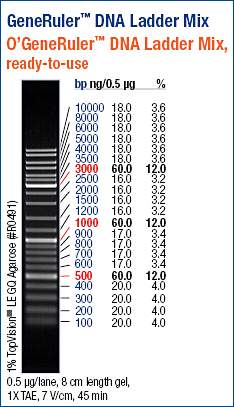My isolation on Friday didn’t yield a sufficient quantity of gDNA for the additional DNA needed for the geoduck genome sequencing project. Used two adductor muscles (Box 1) samples collected by Brent & Steven on 20150811.
Tissue weights:
- Geoduck adductor 1: 433mg (gone)
- Geoduck adductor 2: 457.4mg (gone)
Samples were isolated using DNAzol (Molecular Research Center) according to the manufacturer’s protocol, with the following adjustments:
- Tissues homogenized in 750μL of DNAzol with disposable mortar/pestle tubes using 10 pestle strokes
- After homogenization, topped off tubes to 960μL with DNAzol, added 40μL RNAse A (100mg/mL) and incubated @ RT for 15mins.
- Performed optional centrifugation step (10,000g, 10mins @ RT)
- Initial pellet wash was performed using a 70%/30% DNAzol/EtOH
- Pellets were resuspended Buffer EB (Qiagen)
- Insoluble material was pelleted (12,000g, 10mins @ RT) and supe transferred to new tubes
NOTE: Both samples produced a stark white, “cottony” precipitate after the addition of the ethanol. This precipitate was transferred to a clean tube and processed in the same fashion.
Resuspension volumes
Adductor 1: 200μL
Adductor 2: 50μL
Adductor 1 & 2 fluff: 500μL each
Spec’d on Roberts Lab NanoDrop1000.
Results:
NOTE: The sample labeled “gDNA geoduck adductor 1″ is actually adductor 2. The sample labeled “gDNA geoduck adductor 1{1} is actually adductor 1. However, this is probably moot since these two samples will be pooled shortly.
I’m not going to speculate why there’re weird peaks at 240nm…
The two “fluff” samples aren’t good (extremely high 260/280 ratios, very low 260/230 ratios, and weird peak at 240nm). Not sure what the fluff is that precipitated out with the EtOH addition. Will discard them.
The two normal samples look fine. Will use them for pooling.
Yields
Adductor 1: 52.2μg
Adductor 2: 8.25μg






